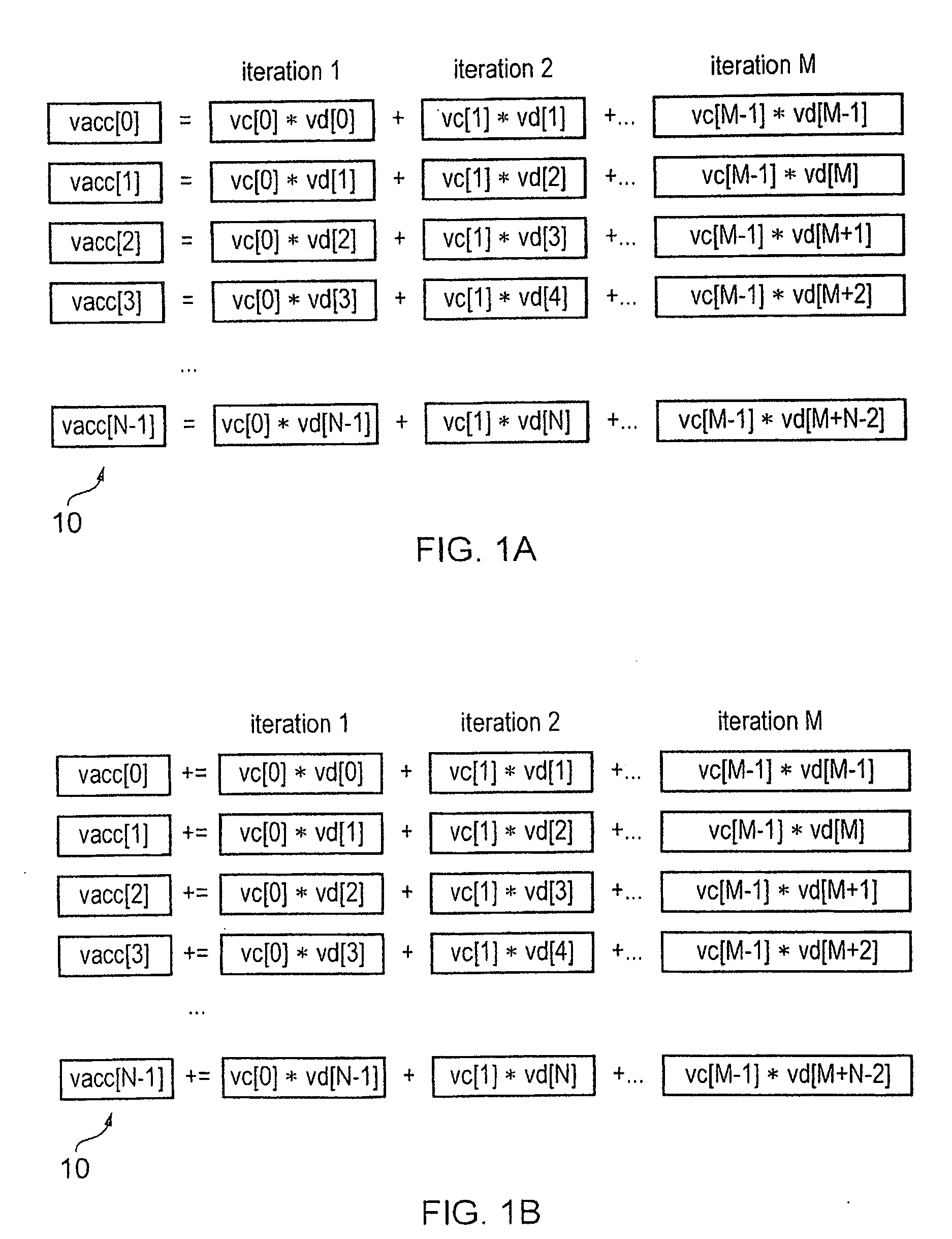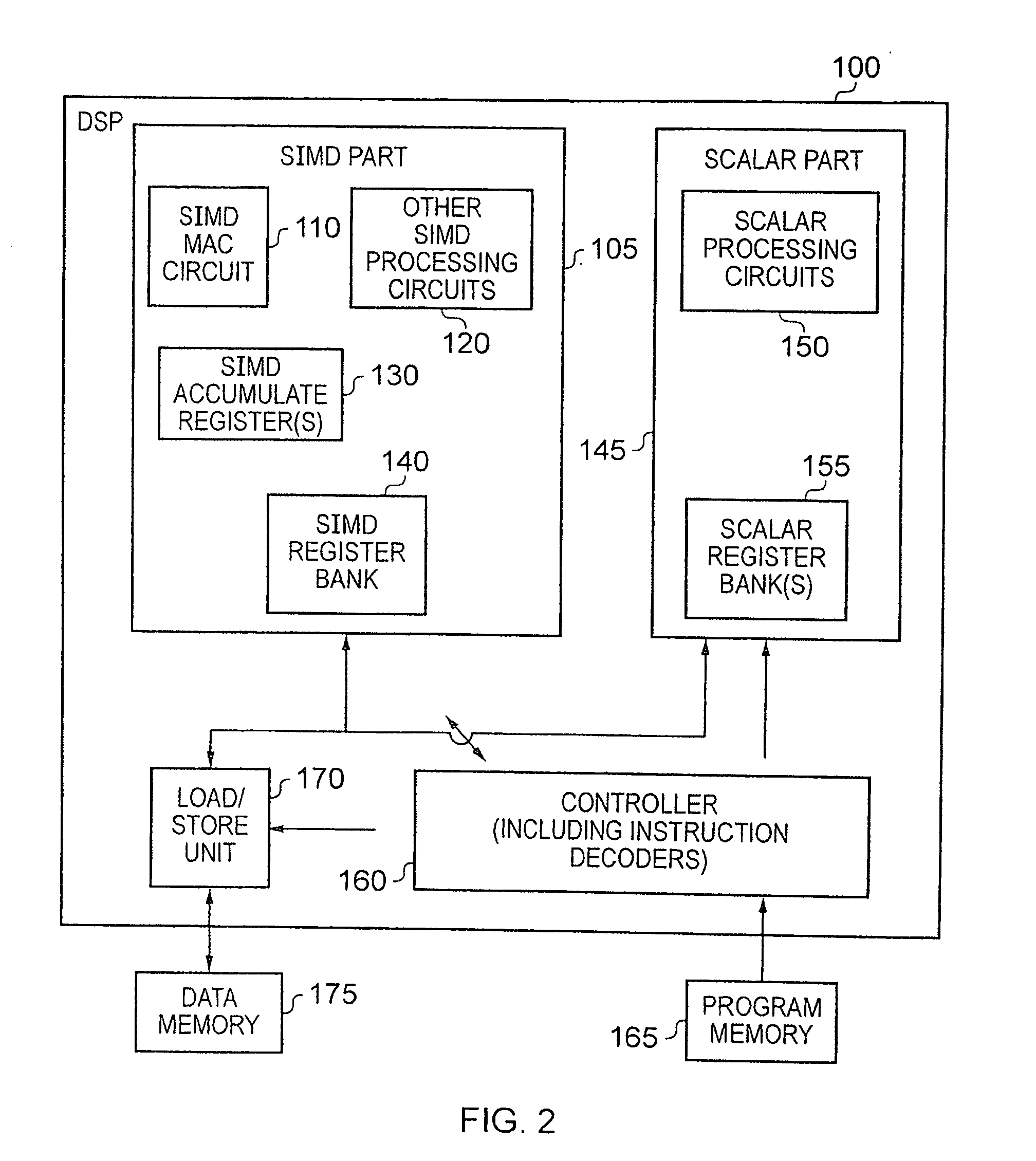Apparatus and Method for Performing SIMD Multiply-Accumulate Operations
- Summary
- Abstract
- Description
- Claims
- Application Information
AI Technical Summary
Benefits of technology
Problems solved by technology
Method used
Image
Examples
Embodiment Construction
[0062]In accordance with embodiments of the present invention, a repeating multiply-accumulate (repeating MAC) instruction is provided which takes as input operands a first vector of input data elements (vd), a second vector of coefficient data elements (vc), and a scalar value indicative of a plurality of iterations M required. Optionally, the repeating MAC instruction may also take as an input operand a vector of initial multiply-accumulate data elements (also referred to herein as initial accumulate data elements).
[0063]When this instruction is decoded by instruction decoder circuitry, control signals are generated that are used to control SIMD data processing circuitry in order to produce a vector accumulator output given by the following equation:
vacc[i]=vc[0]*vd[i]+ . . . +vc[M−1]*vd[i+M−1] for all ‘i’ in the vector
[0064]If a vector of initial multiply-accumulate data elements is specified this equation becomes:
vacc[i]=vacc[i]+vc[0]*vd[i]+ . . . +vc[M−1]*vd[i+M−1] for all ‘i’ ...
PUM
 Login to View More
Login to View More Abstract
Description
Claims
Application Information
 Login to View More
Login to View More - R&D
- Intellectual Property
- Life Sciences
- Materials
- Tech Scout
- Unparalleled Data Quality
- Higher Quality Content
- 60% Fewer Hallucinations
Browse by: Latest US Patents, China's latest patents, Technical Efficacy Thesaurus, Application Domain, Technology Topic, Popular Technical Reports.
© 2025 PatSnap. All rights reserved.Legal|Privacy policy|Modern Slavery Act Transparency Statement|Sitemap|About US| Contact US: help@patsnap.com



